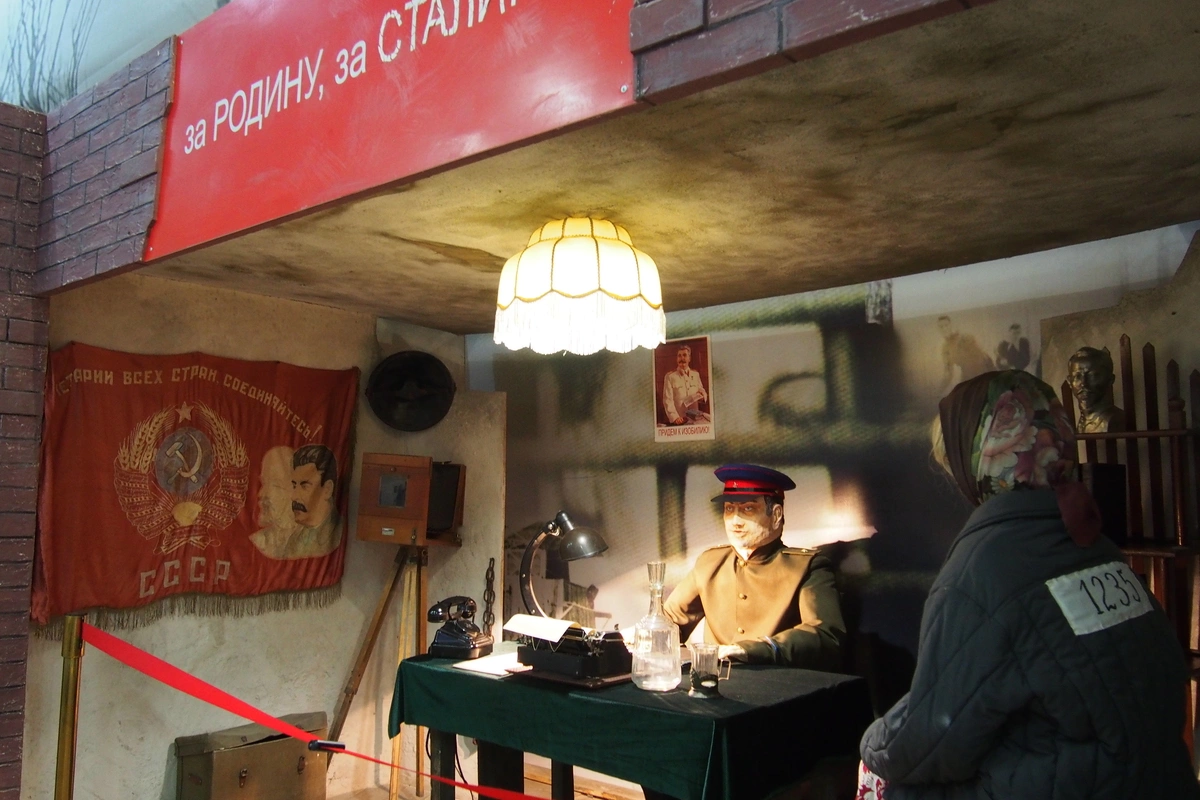
In the heart of Kazakhstan, 40 kilometres west of its capital, Astana, stands what was once a Soviet Gulag camp and, today, a memorial museum, ALZHIR. The story of this camp makes it unique in its own tragedy.
Image: Wikimedia Commons
Established on 15 August 1937, the ALZHIR camp “welcomed” its first victims on 6 January 1938. It was women with children from one to three years old whose only crime was being wives and children of “enemies of the state.” That’s where the name ALZHIR derives from—the Russian acronym for “Akmola camp of the wives of traitors to the Motherland.” However, it wasn’t only wives but also mothers, daughters, and sisters of “traitors” who were placed there.
A total of eight thousand women passed through ALZHIR during the camp’s existence. Subsequently, it was revealed that guards had raped some women, leading to 1507 births. Women from all Soviet countries were sent there—many were relatives of well-known Soviet artists, poets, ballet dancers, etc.
Although the camp was only closed after Stalin’s death in 1953, the first two years at the camp were the harshest. “In the first years, the weak died,” said the head of the excursion department, Raisa Zhaksybaeva, in her interview with Radio Azattyq in 2011. She explained that as the prisoners were mostly from the intelligentsia, having to do hard labour at the camp was too difficult for them.
Despite their fragility, the Soviet authorities considered them “especially dangerous,” which is why, during the first year, they weren’t allowed to know the fate of their family members, as any correspondence with the outside world was prohibited. It wasn’t until May 1939 that the camp’s status was changed to “special restricted mode,” which allowed prisoners to write and receive letters to and from their husbands and children.
The daily life and living conditions that women had to endure there were as harsh as any other Gulag in the Soviet Union. The camp soon became overcrowded, which led to new prisoners having to build new huts for themselves no matter the time of the year. Among the harsh conditions, women slept on a wooden floor with straw used as a mattress.
Their names, titles, and professions were stripped away. Instead, they were given numbers to identify them by—everyone’s title was the same, “traitor to the Motherland,” and the only “occupation” was forced labour. All that while being hungry, their daily menu consisted of a slice of black bread, a scoop of plain soup, and a cup of oatmeal.
Despite the overwhelming despair and misery, there are multiple heartwarming stories of the kindness that Kazakhs living close to ALZHIR had shown the prisoners. It is reported that Kazakhs, who themselves went through the famine in the 1930s, left some food for the prisoners under the bushes in secret.
When one of the former prisoners, Gertrude Platais, returned to Kazakhstan in 1990, she shared a story that later became an essential part of the guided tours by the museum’s staff. Once, when women were carrying reeds from Lake Zhalanash, old men and children started throwing what looked like stones at them. Guards laughed, taunting the women. However, the women realized the villagers weren’t throwing stones, but dry sour milk balls called qurt. It wasn’t hatred that those Kazakhs showed but an act of humanity, as this traditional Kazakh snack helped women survive harsh winters in the steppe.
Today, almost a century later, ALZHIR is a museum-memorial complex. Opened in 2007 by then-President Nazarbayev, the memorial complex consists of a museum building, the “Arch of Sorrow” monument, “Despair and Weakness” and “Fight and Hope” sculptures, a watchtower, a memory wall, and a transportation wagon that was used to bring new prisoners. Although the camp was demolished during Soviet times, the mass grave of women who died there still stands.
Inside the museum—a brown truncated-cone-shaped building with no windows—is the exhibition, which consists of an explanation of the Gulag system, personal belongings of the prisoners, a replica guard post, a transportation wagon, and photos and letters of the women whose fate was so tragic.
Although the ALZHIR camp was in Kazakhstan, it is a shared pain, as women from every other Soviet country were sent here. For example, in neighbouring Azerbaijan, a play, Codename: Wives of the Enemies of the People (Azerbaijani: Kod adı: "VXA" (Vətən xainlərinin arvadları), based on these events premiered at the Azerbaijan State Theater for Young Spectators in December 2022 in Baku. It tells the story of the women who became victims of Stalinist repressions in Azerbaijan in the 1930s, reminding us of extent of the Soviet Union’s tragic history.
Share on social media